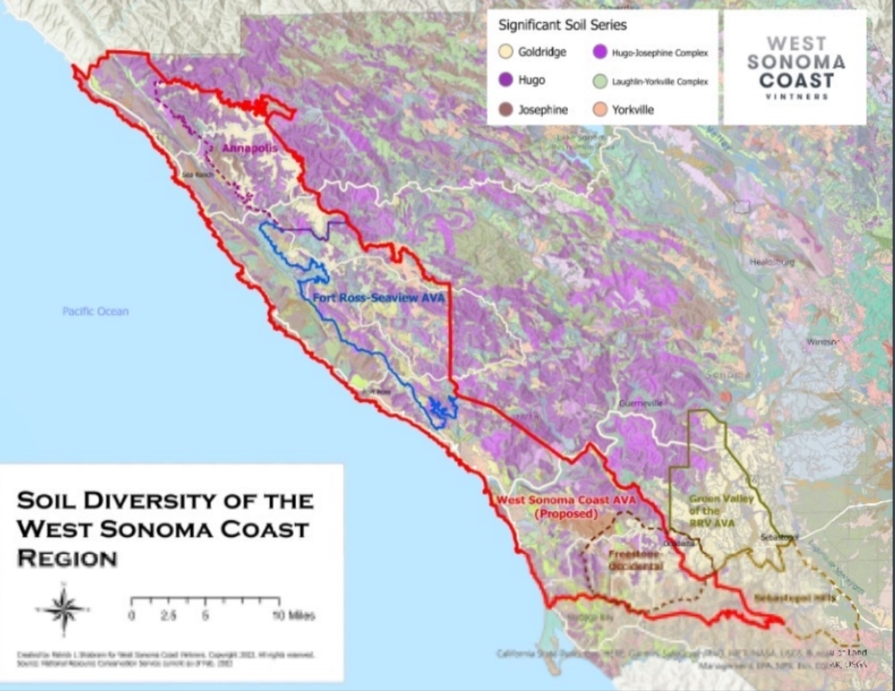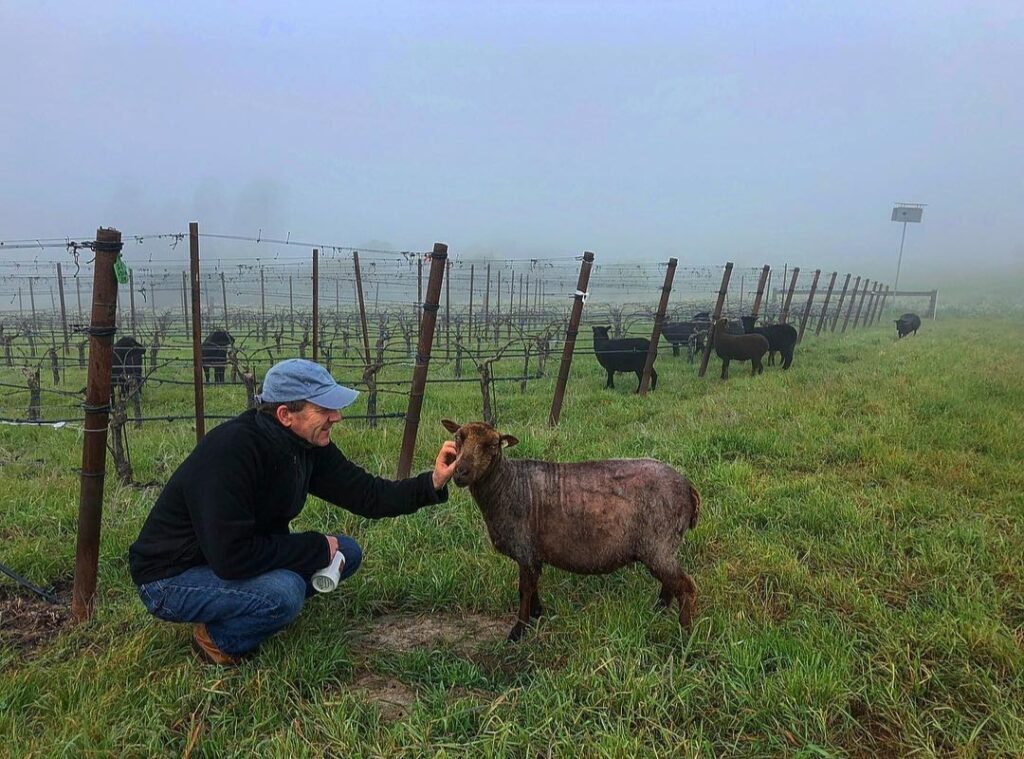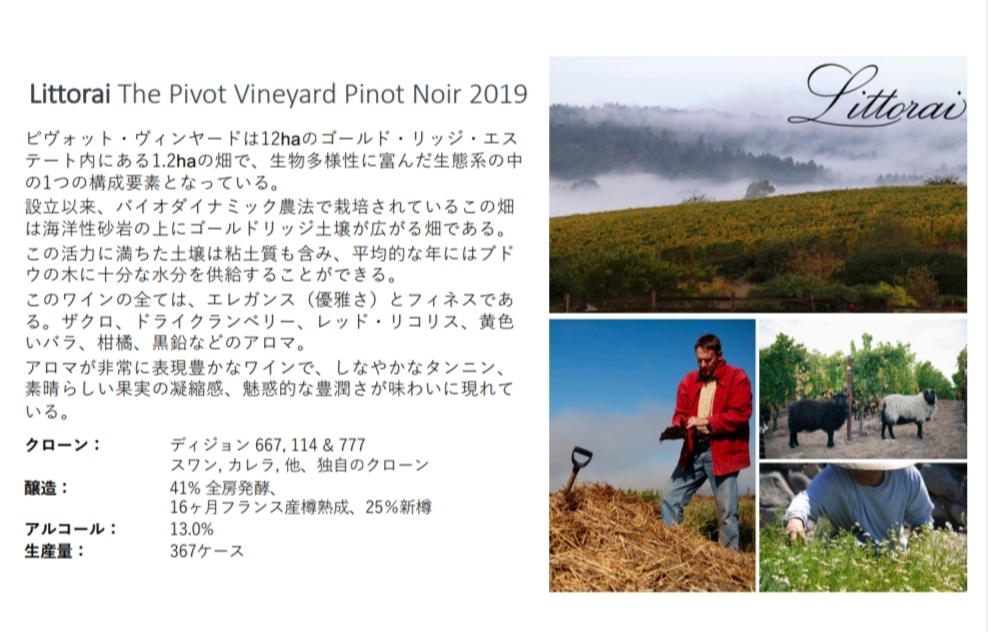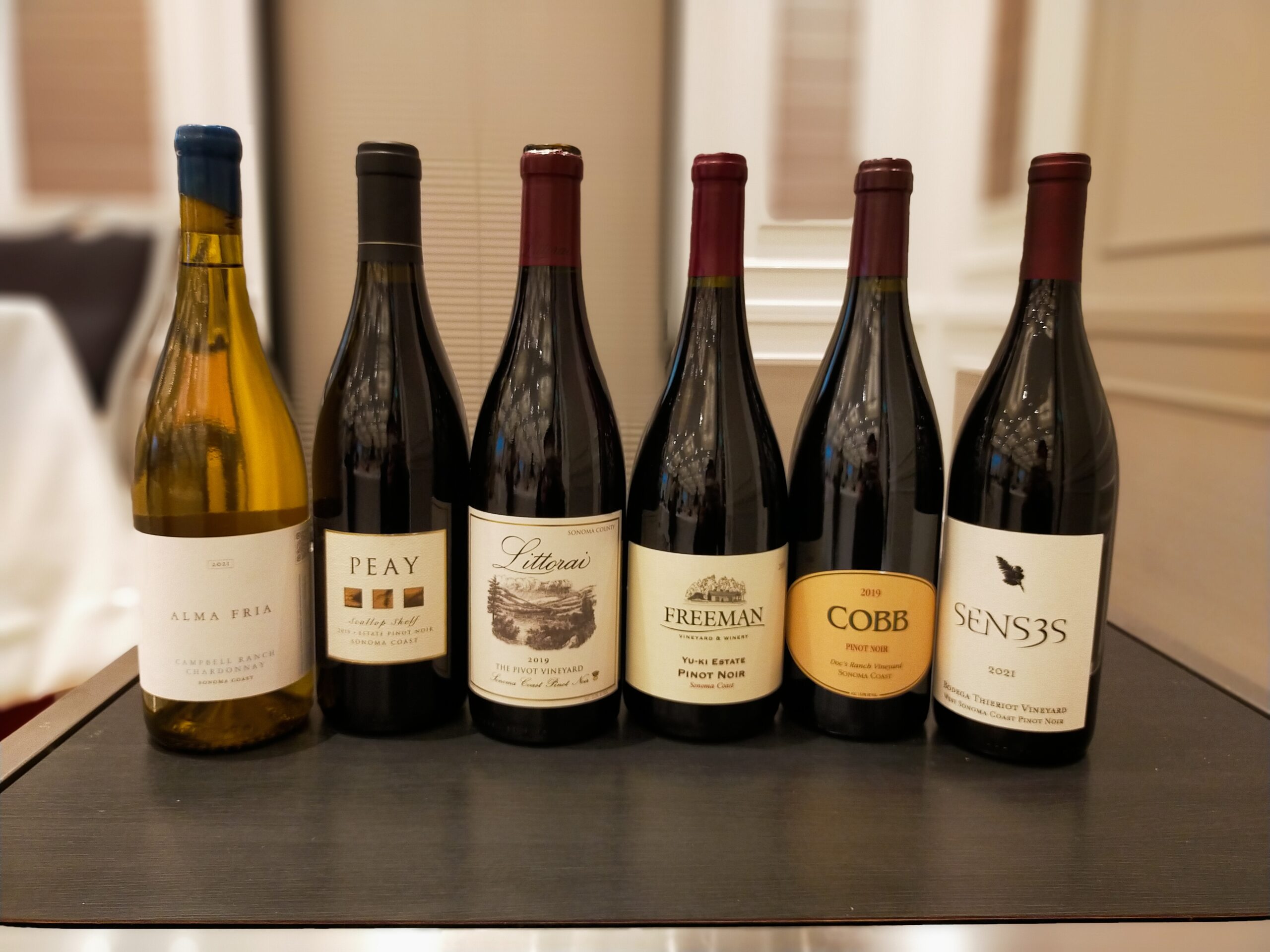- Deepening Our Understanding of the West Sonoma Coast
- Final Thoughts
Deepening Our Understanding of the West Sonoma Coast
To further enhance the clarity of our understanding of the West Sonoma Coast, Sommelier Iwata posed several questions to the producers, who provided insightful responses.
East-West Differences Over North-South
To deepen the understanding of the West Sonoma Coast, Sommelier Iwata posed a question to Carroll.
Iwata: “Looking at a map, the West Sonoma Coast is a long, vertically stretched wine region.
Within its diverse terroirs, I understand that your vineyard is located in the northern part. What differences exist between northern and southern vineyards in terms of terroir?”

Carroll: “Before discussing north-south differences, let me touch on an important point for understanding the region.
Although the region extends north to south, the east-west differences are actually much more pronounced.
Even driving just 15 minutes inland can make a significant difference.
So rather than comparing north and south along the coastline, the temperature variation between west and east is much more distinct.
With that in mind, if we were to highlight north-south differences:
- Northern vineyards are at higher elevations.
- Southern vineyards are lower in elevation.
Due to fog influence, higher elevations tend to be warmer, while lower elevations remain cooler.
Additionally, the microclimates in this region are not strictly defined by north and south—it’s more about soil composition and environmental factors, such as the presence of redwood forests.
One more thing to consider is how the state of the grapes impacts winemaking styles. The characteristics of the fruit influence vinification approaches, leading to subtle variations.”
Iwata: “The West Sonoma Coast is vertically stretched, but whether a vineyard is closer to the ocean or farther inland makes a huge difference, highlighting the strong marine influence.
This also plays a key role in understanding the AVA.
Moreover, people often assume that higher elevations mean colder temperatures. However, this region is unique—its fog patterns create distinct conditions, making it different from other wine regions.
I believe this uniqueness was something that could be felt throughout the tasting as well.”
Differences from Nearby AVAs
Sommelier Iwata asked Andy about how the West Sonoma Coast AVA compares to nearby Pinot Noir regions in Sonoma, such as the Russian River Valley and Anderson Valley, in terms of both wine style and terroir.
Different Expressions of Pinot Noir
Andy explained:
“In terms of wine style and terroir, even though we all produce Pinot Noir, the wines vary significantly.
For example, the Russian River Valley is slightly inland, meaning it experiences much warmer summers. This extra warmth allows grapes to fully ripen, resulting in richer and sweeter fruit profiles.
Wines from Russian River tend to express plush cherry-like characteristics, rather than floral and earthy notes like we emphasize in the West Sonoma Coast.
Meanwhile, Anderson Valley follows a continental climate, but the exact vineyard location plays a huge role in defining its character—whether it’s at a higher elevation, on a slope, or in the northern versus southern part of the valley.
Regardless of vineyard position, Anderson Valley wines tend to showcase darker fruit, bold spices, and firm tannins—what we sometimes refer to as ‘Mendocino spice.’ These traits distinguish Anderson Valley wines from those of West Sonoma Coast.
In short, these climatic and geological factors contribute to clear stylistic differences between Russian River Valley, Anderson Valley, and the West Sonoma Coast.”
Iwata’s Reflection:
“The West Sonoma Coast features the bright, fresh fruit tones that were just described. It also stands out as one of Sonoma’s most prominent cool-climate wine regions, which defines its distinct style.
Each California AVA expresses unique characteristics in the wines it produces, and West Sonoma Coast is certainly carving its place among them.”
Common Winemaking Techniques in the West Sonoma Coast
Sommelier Iwata asked Ted Lemon whether specific winemaking techniques—such as whole-cluster fermentation or cold soaking—are commonly used among West Sonoma Coast producers, especially for Pinot Noir.
Ted’s Response:
“In terms of wine style, the overarching goal for West Sonoma Coast wines is to achieve freshness, transparency, and focused precision.
We aim to craft wines that make your mouth water—those that are irresistibly appealing and vibrant.
There isn’t a singular, agreed-upon winemaking method among the West Sonoma Coast Vintners, such as mandatory punch-downs or whole-cluster fermentation. Instead, the priority is ensuring that the wine expresses the true character of the region.
Ultimately, our focus is on capturing the essence of the West Sonoma Coast rather than adhering to a fixed technical approach.”

Iwata’s Reflection:
“The wines we have tasted do not rely on techniques as the focal point.
Rather, each producer brings out the individuality of the terroir and grape variety, seamlessly expressing them through the glass.
Ted’s explanation makes it clear: winemakers approach terroir and a sense of place as essential elements—like colors on a painter’s palette, rather than strict technical formulas.
The West Sonoma Coast identity is the ultimate goal.”
The Shared Characteristics in West Sonoma Coast Wines

Examining the technical sheets, it’s evident that producers use a wide range of Pinot Noir clones.
Yet, across all the wines tasted, two common traits stand out:
- Purity
- Freshness
These attributes define the distinct expression of West Sonoma Coast wines, making them uniquely recognizable.
Exploring Grape Varieties Beyond Pinot Noir and Chardonnay
Sommelier Iwata asked Akiko Freeman:
“Pinot Noir and Chardonnay are undoubtedly key grape varieties in the West Sonoma Coast, but what other varieties are planted in the region? Are there any particular varieties that you personally find promising?”
Akiko’s Response:
“The cool climate of the West Sonoma Coast makes it challenging for warm-climate varieties like Cabernet Sauvignon and Zinfandel to thrive.
However, Syrah can perform well in cool climates, producing elegant expressions that differ dramatically from those grown in warmer regions. Peay Vineyards, for instance, has been successful with cool-climate Syrah.
Additionally, some producers are working with Chenin Blanc, including Ted Lemon from Littorai Wines.
Ross Cobb has also been producing Riesling, and we recently started experimenting with Riesling as well—thanks to Ross sharing his expertise and grapes with us.
We plan to bottle our first Riesling this April, with hopes of releasing it in the fall.”
Exploring Sparkling Wine
“At Yu-Ki Vineyard, there were some Pinot Noir vines that struggled to ripen due to the shade from redwood trees.
We decided to replace them with Chardonnay, but even that was difficult to ripen fully.
Since I personally love sparkling wine, I opted to harvest early and turn it into sparkling wine instead!
Currently, we produce about 200 cases of sparkling wine annually.”
Iwata’s Reflection:
“I previously thought of the West Sonoma Coast primarily as a Pinot Noir and Chardonnay region, but it’s fascinating to see the growing diversity in grape varieties.
With Chenin Blanc, Syrah, Riesling, and even traditional-method sparkling wines becoming more prominent, the region is clearly embracing a broader range of possibilities.”
Vocabulary for Describing the West Sonoma Coast
Sommelier Iwata asked Ross Cobb: “What words do you use to describe wines from the West Sonoma Coast?”
Cobb’s Response:
“Since the vineyards are close to the ocean, the cool climate brings out raspberry-like freshness, floral qualities, and hints of spice.
As you move slightly inland, the expression shifts—cherry and cherry cola flavors become more dominant, with richer fruit-driven characteristics reflecting ripeness and natural sweetness.”
Iwata’s Reflection:
“When identifying different wine regions, specific vocabulary helps differentiate AVA characteristics.
The descriptors shared by Ross today were clearly reflected in the wines we tasted. The nuances of fruit expression, floral tones, and subtle spices contribute to the distinct identity of West Sonoma Coast wines.”
Unique Viticultural Practices in the West Sonoma Coast
Sommelier Iwata asked Chris: “Given the strong winds in the West Sonoma Coast, are there any unique viticultural techniques or strategies employed in the region?”
Chris’s Response:
“The cold Pacific influence and strong winds make grape growing challenging, but they ultimately benefit the vines rather than hinder them.
The extended growing season allows the wines to develop greater depth and complexity.
However, one drawback is naturally low yields.
The region’s frequent fog brings moisture, which requires some preventative measures against mold, but overall, we see these conditions as positive factors rather than obstacles.
The combination of California sunshine and cool-climate acidity results in a unique balance that reflects the terroir beautifully.”
Overcoming Challenges for Exceptional Wine
Chris then touched on the labor challenges involved in viticulture here:
“While the focus is on vineyard practices, it’s important to recognize the human element.
Working in this region is logistically difficult—commuting to vineyard sites takes a long time, and traveling to vineyards like Peay’s requires navigating winding mountain roads.
Despite the challenges, the commitment to crafting exceptional wines makes it all worthwhile. This dedication is shared by all of us in the West Sonoma Coast.”
Iwata’s Reflection:
“Visiting the area, I noticed how vast it is, yet vineyards are scattered sparsely across remote mountainous terrain.
Winegrowing here is physically demanding, but that difficulty is precisely why the resulting wines are truly unique.”
Final Thoughts
This report has covered insights from the California Wine Seminar I attended.
I might sound a little outdated, but before taking part in this seminar, I still had lingering stereotypes about California wines—thinking they were just fruit-heavy, full-bodied, mass-produced wines with a handful of cult favorites.
However, through tasting and listening to the producers, I was able to update my perspective.
Hopefully, this article has been helpful to you as well!
This year, I want to gain knowledge not for showing off, but for truly appreciating the wine in front of me—deepening my understanding with every sip.
Of course, enjoying wine casually and freely is equally, if not more important, and I plan to keep doing just that.
(Basically, same as always—haha!)
That said, if you’ve enjoyed reading along, I’d love to keep the conversation going.
Wishing everyone an amazing wine-filled journey ahead!
See you next time! 🍷



コメント